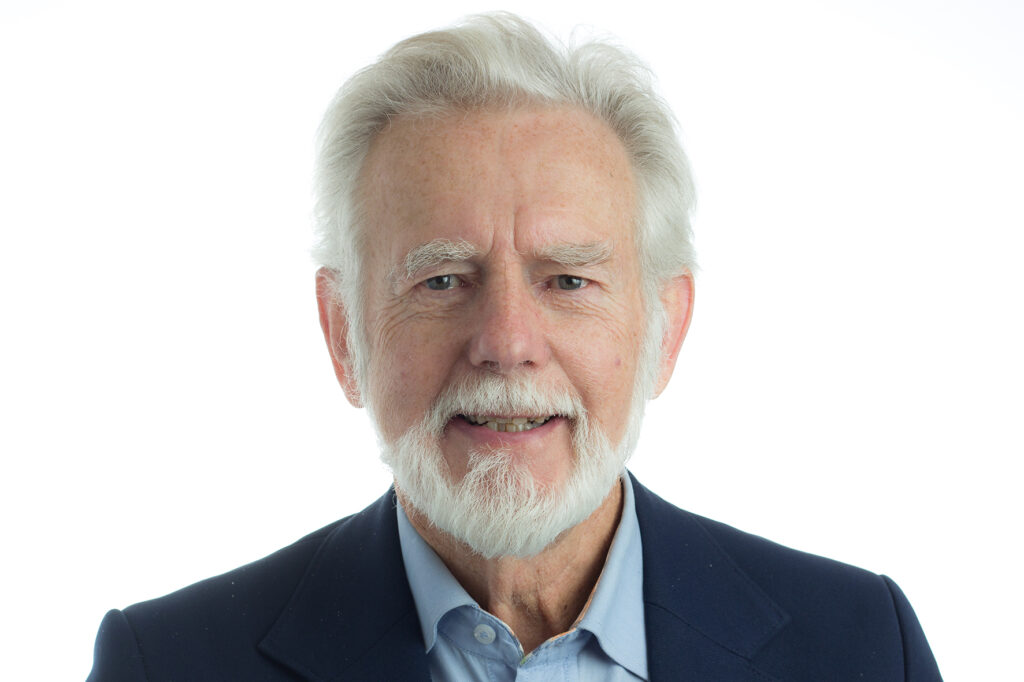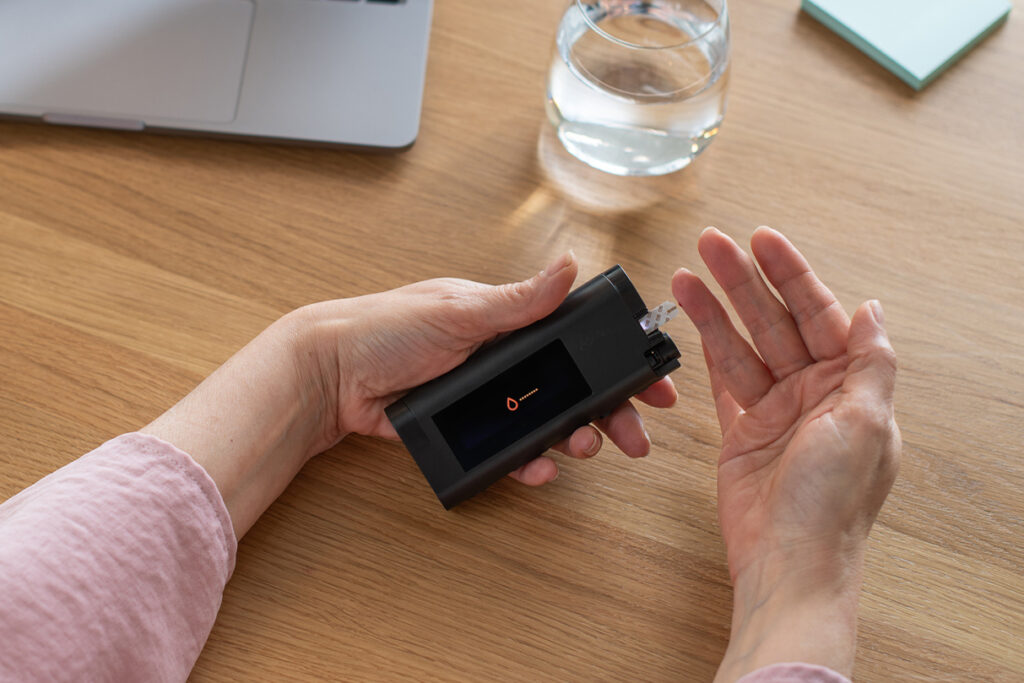The number of people living with diabetes is increasing every year, and treating diabetes-related diseases represents a large cost for global healthcare. Johnny Ludvigsson, one of the world’s top ten experts and researchers on type 1 diabetes, looks forward to working with Brighter and its digital solutions that strive to make it easier for both patients and healthcare professionals.
Johnny Ludvigsson, the new board member at Brighter AB, is a Swedish doctor and professor of pediatrics at Linköping University, Chief Physician at the Children and Women’s Center at the University Hospital in Linköping, and Founder of the Child Diabetes Foundation. With his worldwide network of contacts and extensive experience and expertise, Ludvigsson is expected to be a significant asset for Brighter in its continued work to create solutions for connected and data-driven diabetes care. We had the pleasure to interview him after his attendance at Brighter’s Annual General Meeting.

Photo by Emma Busk Winquist/Linköpings universitet.
Brighter is happy to have you on board as a new board member. Please tell us why you decided to become a board member?
I was contacted by the Nomination Committee who informed me about Brighter, its product and operations. I took some time to read some more about the company and came to the conclusion that the area the company is focusing on feels very important and interesting. Most importantly, I believe I can contribute to Brighter’s future success.
What are your thoughts on Brighter’s diabetes solution and the company’s choice of focus markets?
After attending the AGM and listening to both product and company presentations, I am even more sure that Brighter’s solution can be of great help to healthcare providers and many diabetic patients, both with type 1 and type 2 diabetes. This is especially so in countries in Asia, the Middle East, Africa and the Americas, where Actiste can help patients to both understand and cope with their treatment much more easily. Patients will have a much greater opportunity to collaborate with those who provide care (diabetes doctors, diabetes nurses, etc.). Their condition will improve if patients, through the Actiste® solution, get a better blood-sugar balance. This can lead to fewer complications and at the same time healthcare is made more efficient.
“Few, if any, other diseases involve as many different organs and mechanisms as insulin-dependent diabetes.”
Why did you originally start researching diabetes? What raised your interest?
I started researching diabetes in the mid-1960s during my medical education. There was already ongoing research in the field and I believed then – and still believe now – that diabetes is an interesting disease, as it involves basically everything in the body.
In the spring of 1971, when I had decided to become a pediatrician, I moved to the Pediatric Clinic in Linköping. Yngve Larsson – the leading researcher at the time in the field of insulin-dependent diabetes – had just become a professor. It became natural to start more clinical research with him, and to work clinically with diabetes. Few, if any, other diseases involve as many different organs and mechanisms as insulin-dependent diabetes. It’s also still a “mystery disease” with complicated treatment, as it cannot be prevented or cured.
You’ve been involved in diabetes research since the 1960s – can you tell us a little about yourself and your career? Where did you start and where are you now?
I started in the pathology department at Uppsala University where I studied how the islets of Langerhans (where insulin production takes place) grow in the anterior chamber of the eye.
Later, in Linköping, I got involved with clinical research. I was the first person to conduct child studies on residual insulin secretion (method for C-peptide was published 1974 by Lise Heding) – I also began to study immunological mechanisms and carried out the world’s first immune intervention (Plasmaferes) to try and protect residual insulin secretion in newly-diagnosed diabetic children. We then discovered a substance in the blood of diabetic children, which later turned out to be an important autoantigen, GAD, and from the 1990s it has been the basis for autoantigen treatment at the onset of type 1 diabetes.

I have done a large number of immune intervention studies and I now lead a Phase III study with intralymphatic GAD treatment in collaboration with a Swedish company (Diamyd). In the early 70s I was part of starting Linköping’s Diabetes Complications Study and we became first in the world to show, in a general diabetes group, that one can prevent severe late complications. Studies related to complications have continued and are still ongoing.
A third major area is to study the causes of type 1 diabetes. I founded and still lead ABIS, Alla Barn I sydöstra Sverige (‘All children in Southeast Sweden’) which is a world-unique follow-up of about 17,000 children born from 1 Oct 1997 to 1 Oct 1999 in Southeast Sweden. Several international research groups are involved in these studies.
Brighter is often talking about diabetes prevalence. What is the difference between prevalence and incidence?
Prevalence and incidence are frequently confused. Prevalence refers to proportion of persons who have a condition at or during a particular time period, whereas incidence refers to the proportion or rate of persons who develop a condition during a particular time period.
How would you characterize the changes in the incidence of type 1 and type 2 diabetes during the decades you’ve been active in the field?
Type 2 diabetes is most common, but not at all as common in Sweden as in many other countries –such as the Middle East, Asia, Africa and the Americas – where the tendency to get type 2 diabetes is much greater than in Sweden. Type 2 diabetes is largely due to being overweight or even suffering from obesity, too little physical activity, and stress. Sweden, on the other hand has, next to Finland, the world’s highest incidence of type 1 diabetes. It is partly due to our genetic predisposition, but the increase is also related to changes in the environment and lifestyle. Here we still only have good hypotheses, but we don’t know for sure.
“There are so many balls in the air that many are unable to keep their eye on them in order to successfully dose insulin, eat right, and so on.”
In your experience, what are the biggest challenges in diabetes treatment (from the patient’s, equipment/data and healthcare staff’s perspective)?
When it comes to type 2 diabetes, the main problem is that it is difficult to get people to lose weight, increase their physical activity and change their lifestyle. In many cases these changes would, in practice, both prevent and even “cure” type 2 diabetes. Solutions that increase knowledge and motivation can be useful, and to the extent that you still need to treat with medication, and possibly insulin, these solutions are needed to help patients get an overview of all their data related to blood sugar, diet, exercise, medication, etc.
This becomes even clearer in the case of type 1 diabetes, which has even more complicated treatment. Many people manage the treatment well, but unfortunately not all. There are so many balls in the air that many are unable to keep their eye on them in order to successfully dose insulin, eat right, and so on.
By joining Brighter’s board, in what way can you, with your long experience, contribute to the company’s continued/future success?
I can provide views on the design and development of the products and solutions themselves, and I have long and broad experience of what healthcare staff and patients need and want. In addition, I have a wide network of contacts around the world and can help reach out to those who provide diabetes care in different countries. Members of the Brighter team have already reached out to me and I look forward to working with this exciting company.
About Johnny Ludvigsson, new board member at Brighter AB.
During the years 1985 -1991, Johnny Ludvigsson was Secretary General of the International Society for Pediatric and Adolescent Diabetes, the world organization for childhood and adolescent diabetes. He has received, among other accolades, the Novo Nordisk Foundation’s award for diabetes research in 1998 and the Inaugural ISPAD Prize in 2001. He has also been appointed as an Honorary Member of EASD, an Honorary Member of ISPAD, and an Honorary Member of the Swedish Diabetology Association. He was named Diabetologist of the Year in 2009, and in 2014 was awarded the Knud Lundbæck Award by the Scandinavian Society for the Study of Diabetes. To date, Johnny Ludvigsson has published more than 500 articles, and every year the Child Diabetes Foundation awards two prizes in Johnny Ludvigsson’s name to prominent child diabetes researchers in Sweden and the other Nordic countries.
Find the latest articles from Brighter at Latest from us.
